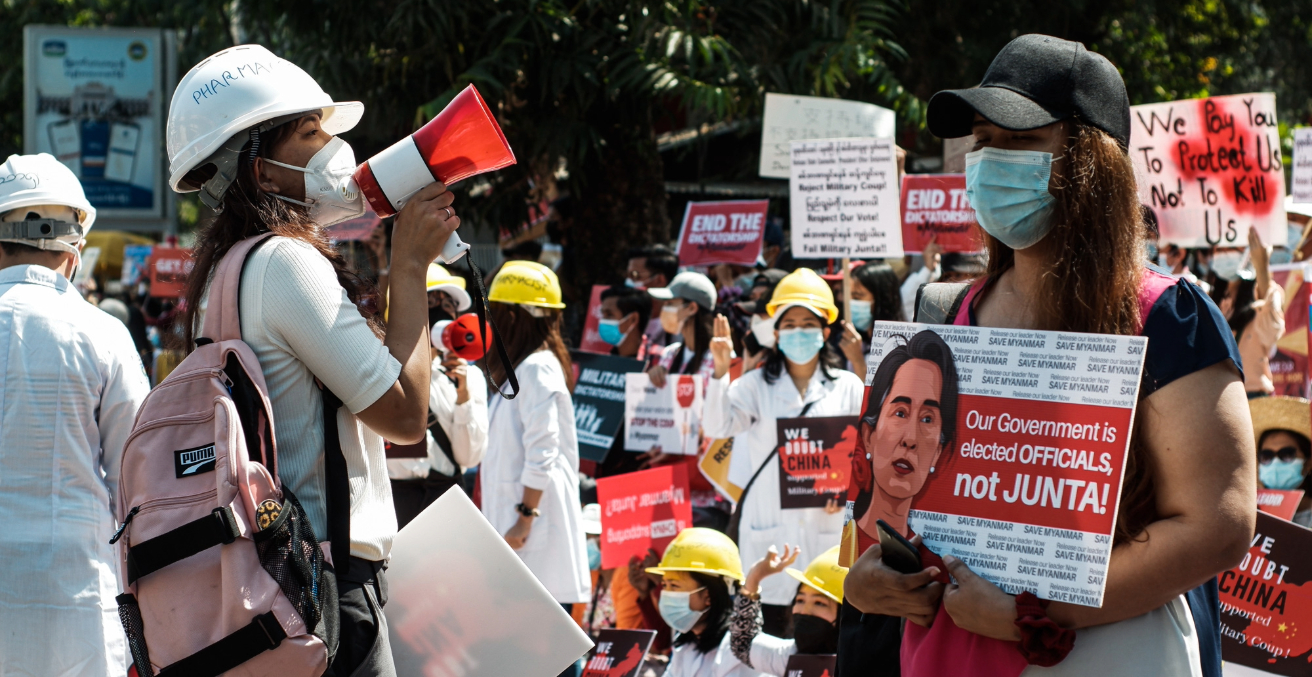Outer space has assumed an increasingly important position in the Japan-US alliance. Japan’s engagement in regional community-building through a multilateral space forum challenges China’s aspiration to lead regional cooperation in outer space.
Japan has promoted bilateral space cooperation with its sole ally, the US. The cooperation has been prominent in the field of the Space Situational Awareness (SSA) program that began with bilateral agreements. In May 2013, the Japanese and US governments concluded a memorandum of understanding on SSA services and information sharing. On the basis of this agreement, the Japanese government began to provide the US with information about the orbits of space objects in May 2014. Moreover, the Guidelines for Japan-US Defence Cooperation, which was revised in April 2015, set up an independent section on space and cyberspace cooperation for the first time. The section refers to the resiliency of space systems and the enhancement of SSA cooperation. The two governments agreed to provide mutual support to establish and improve capabilities and share information about actions and events that might affect the safety and stability of the space domain. In the same month when the revised guidelines were announced, the Japan-US Space Cooperation Working Group between defence authorities was set up for policy-related consultation.
The partnership on SSA extended to Japan’s participation in SSA-related exercises in the USA. In 2015, Japan became an observer of an SSA Tabletop Exercise (TTX) organised by the US Strategic Command. Japan has joined this SSA-TTX, which would be called the Global Sentinel later, as a full participant since 2016. In October 2018, Japan was invited to join the 12th Schriever Wargame at Maxwell Air Force Base, Alabama. This multilateral TTX explored critical space issues set in the year 2028 and examined the integration of the strategies and operations of multiple agencies associated with space systems and services policy. The Schriever Wargame had been basically open to the so-called Five Eyes — the USA, the United Kingdom, Australia, Canada, and New Zealand — and Japan’s participation implied its gaining a special position as a partner for space strategy for Washington.
The Japan-US partnership on SSA led to practical cooperation. Japan has developed the QZSS, a Japanese satellite positioning system composed of satellites in quasi-zenith orbits. The first QZSS satellite, Michibiki, was launched in September 2010, and the four-satellite constellation system was established in November 2018. With the planned completion of a seven-satellite constellation around 2023, Japan would be able to create an independent regional positioning, navigation, and timing capacity, making significant contributions to improving positioning accuracy in the Asia-Pacific region. The Japanese government intends to host US-provided SSA payloads on the QZSS in 2023, and this hosting would enhance the resilience of the US space systems through disaggregation to separate dissimilar capabilities into separate payloads. Moreover, the Ministry of Defence plans to develop SSA-equipped Deep Space Radar in Yamaguchi prefecture, which would operate in 2023. The information from the radar would be aggregated and investigated at the SSA operating system located in Fuchu Air Base in Tokyo.
Furthermore, Japan promotes cooperation on SSA through a space unit within the ASDF. In May 2020, Japan set up the Space Operations Squadron with an initial size of 20 personnel, and the number of staff is projected to be 100 in 2022. The major task of this squadron is the operation of the SSA system, monitoring space debris and threats to Japan’s important satellites such as jamming signals and other ASAT attacks. Japan’s attempt to set up the first space domain mission unit followed a similar move in the USA. In December 2019, the US Department of Defence established the Space Force as the sixth branch along with the Army, Navy, Air Force, Marines and Coast Guard. In accordance with this US initiative, Japan took a harmonised action by advancing the creation of a space unit from the originally planned 2022 to 2020. The Japanese Space Operations Squadron plans to promote formal cooperation with the US Space Force to establish a space monitoring system in 2023.
In addition to a bilateral partnership, there is a move towards a trilateral partnership involving Australia. Japan, the USA, and Australia began to hold the Trilateral Strategic Dialogue (TSD) at the sub-cabinet level in 2002 and agreed to change it into a ministerial-level talk in 2005. The TSD gradually intensified a strategic orientation aiming at a partnership in maritime security in the Indo-Pacific and restraints on malicious cyber activity. Japan, the USA, and Australia have also engaged in a trilateral partnership in outer space. The three governments have held the Japan-US-Australia Space Security Dialogue since 2011 in order to exchange information about and opinions on situations on outer space and space policies. The trilateral space cooperation had not been substantial for a long time partly because there were no bilateral connections in the space domain between Japan and Australia. The two states began the first stage of space cooperation — a partnership between S&T agencies — as JAXA and the Australian Space Agency (ASA) forged a formal agreement in July 2020. Moreover, Japan and Australia became the eight founding members to sign the Artemis Accords, a US-led international agreement that paved the way for joining a programme to return humans to the moon by 2024 and explore and utilise resources there. These moves are expected to function as a catalyst in promoting substantial space cooperation under the trilateral framework.
In parallel to bilateral/minilateral space cooperation, Japan has engaged in multilateral space cooperation in the Asia-Pacific region. In 1993, JAXA and its supervisor ministry, the Ministry of Education, Culture, Sports, Science and Technology (MEXT), established the APRSAF, a loose international forum that began with no formal agreement or memorandum of understanding. The APRSAF gradually strengthened institutional functions by establishing four working groups in 2001 and launching the Sentinel Asia, the first common project, in 2005. The Executive Committee, which was established in December 2012, coordinates the forum’s operations to uphold principles, share the agenda and help achieve objectives and implement decisions. The APRSAF Task Force began deliberation on the principles of the APRSAF in early 2012, and the Principles of APRSAF, which spells out goal, objectives, approach and participation, was formally adopted in May 2013. The APRSAF with soft rules and practices has functioned as a platform for exchanging information and views about space development among state and non-state actors. The annual meeting of the forum has been comprised of two pillars — a plenary session and working group sessions. The participants have deliberated on specific issues in space applications, space technology, space environment utilisation, and space education.
The APRSAF has pursued open and inclusive cooperation by collecting a wide range of participants from space-related organisations in the Asia-Pacific and other regions. As Pekkanen (2020, 17) contends, ‘APRSAF now bills itself as the largest space-related conference in the Asia-Pacific region, involving space agencies, government bodies, international organisations, private firms, universities, and research institutes from over 40 countries’. Moreover, the forum has adopted the horizontal, voluntary, and flexible style of management. This is illustrated by the fact that various countries in the Indo-Pacific region such as Mongolia, South Korea, Australia, India, Thailand, and Vietnam have sustained the APRSAF by voluntarily becoming the host of annual meetings. The theme of the annual meeting has reflected the interests of a hosting country. For instance, the theme of the APRSAF-17 in November 2010 was ‘The Role of Space Technology and Industry in Addressing Climate Change’. This theme with a specific subject of climate change reflected the interest of Australia, the host of the meeting. The Australian-initiated new project, the Climate Change Regional Readiness Review for Key Climate Missions (Climate R3), was formally agreed upon at the APRSAF-18. The forum’s open and horizontal style surely contributes to deepening the understanding of free, frank, and transparent forms of discussion and management.
The APRSAF has promoted common projects through working groups. The long-lasting programme is the Sentinel-Asia, which was endorsed at the APRSAF-12 in 2005 with an eye to mitigating negative impacts from natural disasters in the Asia-Pacific region. The Sentinel Asia, which is supported by Japan’s advanced land observing satellite, Daichi, consists of Data Provider Node, DATA Analysis Node, and Disaster Management Organisation. JAXA and the Asian Disaster Reduction Centre (ADRC) in Kobe, Japan, assume the Secretariat of this scheme and provides data analyses and value-added products of satellite data (Ochi et al. 2019, 878). Additional projects are Space Applications for Environment (SAFE) and Asian Beneficial Collaboration through ‘Kibo’ Utilization (Kibo-ABC). While the former is a voluntary initiative to encourage environmental monitoring in the long term to understand environmental changes, the latter aims to promote International Space Station (ISS)/Kibo utilisation among researchers and engineers and to share and build on outcomes from the utilisation.
In the late 2010s, the APRSAF has given its gradual focus on space policy affairs. At the APRSAF-24 in 2017, a new workshop on space policy perspectives for governance in space was organised in order to provide an overview of space policy perspectives and explore further possibilities for international cooperation in the Asia-Pacific region. At the APRSAF-26 in 2019, sessions on space exploration and practices for the stable use of outer space were organised in order to discuss policy agendas that attracted increasing interests in the Asia-Pacific region. The APRSAF Nagoya Vision issued at the APRSAF-26 raises ‘Advancing capabilities in policy implementation on common issues in the region’ as one of four goals for the APRSAF activities over the following ten years. An important aspect of space policy affairs is growing concern with legal issues. At the APRSAF-24, the National Space Legislation Initiative was newly launched. This initiative aims at enhancing regional countries’ capacity to draft and implement their national space legislation and policies by international norms through information sharing and mutual learning at a study group among legal and policy practitioners.
Hidetaka Yoshimatsu is a Professor of Politics and International Relations at Ritsumeikan Asia Pacific University, Japan, as well as Visiting Research Fellow, University of Adelaide, Australia.
This article is an extract from Yoshimatsu’s article in the Australian Journal of International Affairs titled “Exploring the China factor in Japan’s foreign and security policy in outer space” It is republished with permission.




